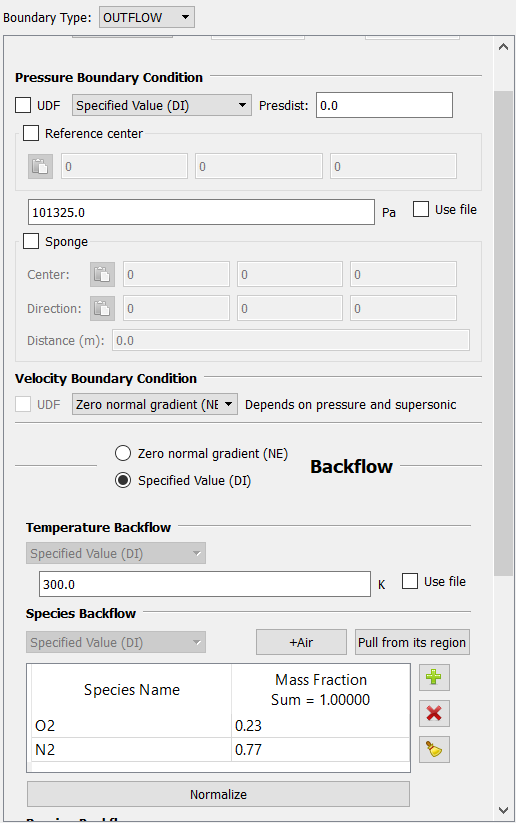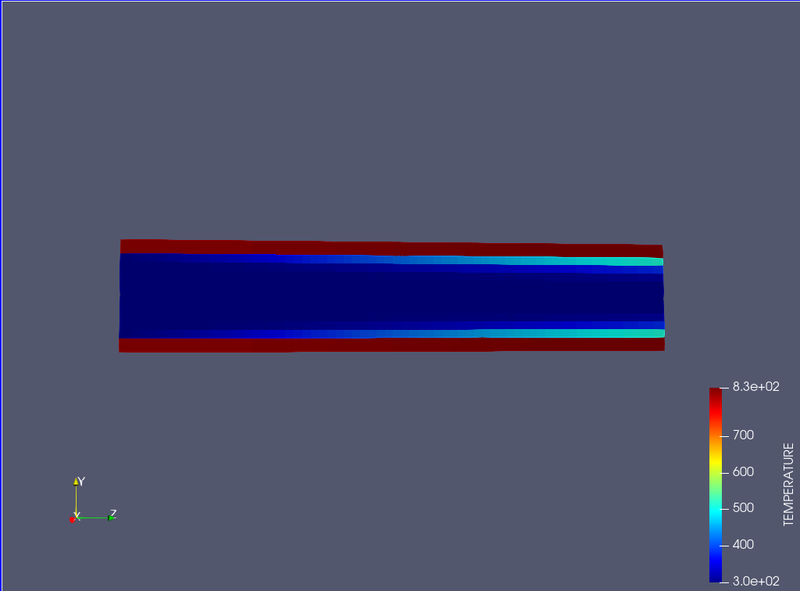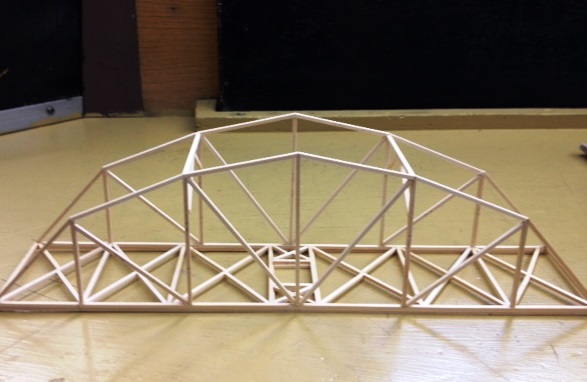Courses by Software
Courses by Semester
Courses by Domain
Tool-focused Courses
Machine learning
POPULAR COURSES
Success Stories
Week 6: Conjugate Heat Transfer Simulation
CONJUGATE HEAT TRANSFER SIMULATION AIM: to simulate a Conjugate Heat transfer simulation across a pipe. OBJECTIVE: Baseline configuration Setup…
Chilakamarri Vedavyas
updated on 12 Aug 2021
CONJUGATE HEAT TRANSFER SIMULATION
AIM: to simulate a Conjugate Heat transfer simulation across a pipe.
OBJECTIVE:
Baseline configuration
- Setup a flow simulation through a pipe
- Inlet Reynolds number should be 7,000
- Re = (rho*V*D)/(Dynamic viscosity)
- Turbulence modeling - K-Epsilon
- Super cycling parameters - same as in the video
Additional 3D outputs
- Add Y+ to your post.in file
Grid dependence test
- Start with an initial base grid
- Run grid dependence test on 3 grids and show that the outlet temperature converges to a particular value
Effect of supercycle stage interval
- Set supercycle stage interval to 0.01,0.02 and 0.03
- For these three values, how does the total simulation time compare against the baseline configuration
THEORY:
Conjugate heat transfer:
Conjugate heat transfer is used to describe the processes which involve variations of temperature within the solids and fluids, due to thermal interaction between the solids and fluids.
The CHT analysis is generally used in places where there is heat transfer taking place for example when a fluid flows through a pipe and the heat of the fluid is transferred to the pipe by convection. CHT analysis is very much useful in analyzing the areas where there are two bodies in which heat transfer takes place. when this analysis is used it is easy to calculate the heat transfer coefficient temperature and velocity of a fluid flowing through a certain body.
This type of heat transfer corresponds to the combination of heat transfer in solids and heat transfer in fluids. heat transfer in solids is called conduction and heat transfer in a fluid is called convection.
conduction occurs due to the direct molecular collision. the faster kinetic energy collides with the low-speed kinetic energy and the heat transfer occurs.
The convection process is not happening alone. it is combined with the conduction or radiation. it occurs mostly in the cooling process like Heat sink, Battery cooling, Airflow over the solid object for cooling.
SUPER CYCLING:
Super-cycling is a method used in converge studio for CHT problems with multiphase regions(solids and liquids). The solvers for different fluids cannot run at the same speed for solving fluid it is much faster as compared to solids. If, this is done the solution does not reach convergence. so, super cycling can be used to resolve this issue. This helps solver of fluid domain is paused until the solver for solid converges.
Y+:
Wall functions are useful in telling the solver how to approach the solution near the wall. this helps in predicting the turbulence models for the coarse grid. no-slip condition is used if the flow is completely laminar that does not depends on grid size. For turbulent flows, the laminar region is very small to get accurate results we need a very small grid size near the boundaries. This is where the Y+ value helps. Y+ is a non-dimensional term that can be used to understand the grid is finer or course. This can be used to determine if wall functions are used or not. In viscous sub-layer Y+ is less than 10 and in a turbulent region, Y+ is greater than 30.
SIMULATION AND SOLUTION:
In this project, we'll be running a total of 6 cases where 3 are based on mesh size and 3 are based on supercycle stage intervals
Geometry:
Our geometry is created with a base radius of 0.015 m and a thickness of 0.005 of a cylinder.

Setup:
|
Application Type |
Time-based |
|
MATERIALS: |
|
|
1. Gas simulation |
Standard |
|
2. Global Transport Parameters |
Standard |
|
3. Solid simulation |
 |
|
4. Species |
1. fluid: O2 and N2 2. Solid Aluminium |
|
SOLUTION PARAMETERS |
|
|
1. Run Parameters Steady-state monitor: |
Transient >Full hydrodynamic>Compressible
|
|
2. Simulation time parameters |
|
|
3. Solver parameters |
Navis-stokes solver scheme: PICO Navis-stokes solver type: density-based |
|
BOUNDARY CONDITIONS |
 |
|
1. Inlet |
Where,
Given: Re = 7000 rho = 1.161 kg/m^3 D = 0.03 m Dynamic viscosity = 1.845e-5 kg/ms substituting velocity = 3.708 m/s |
| 2. outlet |  |
|
3. Outer wall |
 |
|
4. Side-wall |
 |
|
5. Interface |
|
|
INITIAL CONDITIONS AND EVENTS |
|
|
1. Regions and initialization |
|
|
PHYSICAL MODELS |
|
|
1 Turbulence modeling |
RNG- k-epsilon |
| 2. Super cycling |  |
|
GRID CONTROL |
|
|
1. Base mesh |
CASE 1 dx = 0.004, dy = 0.004 and dz = 0.004 CASE 2 dx = 0.003, dy = 0.003 and dz = 0.003 CASE 3 dx = 0.002, dy = 0.002 and dz = 0.002
|
|
2. Fixed embedding |
|
|
OUTPUT/POST-PROCESSING |
|
|
1. Post variable selection |
Add Y+ |
|
2. Output files: |
|
Then Export the Files
Then continuing the setup in Cygwin :
- leading to the folder where the exported files are saved
- Then using mpiexec.exe -n 2 converge.exe restricted to simulate the setup
- After the output is generated, we lead the Cygwin to the output folder, and by copying the post_convert folder and
- Using mpiexec.exe -n 2 post_convert.exe and converting these files for processable output in ParaView.
BASED ON MESH
CASE 1:

VELOCITY COUNTER

PRESSURE COUNTER

TEMPERATURE COUNTER

YPLUS

CASE 2

VELOCITY COUNTER

PRESSURE COUNTER

TEMPERATURE COUNTER

YPLUS

CASE 3

VELOCITY COUNTER

PRESSURE COUNTER

TEMPERATURE COUNTER

YPLUS

BASED ON SUPER CYCLING:
CASE 1 : Super cycling intervel= 0.01

CASE 2:Super cycling intervel= 0.02

CASE 3: Super cycling intervel= 0.03

FLUID REGION

SOLID REGION

CONCLUSION:
- Refinement of grid results in clearer plots however at the expense of computational time
- Decreasing the SUpercycling time interval results in a reduction of computational time
- Irrespective of grid size, fluid values converge to a particular value.(380 K)
Leave a comment
Thanks for choosing to leave a comment. Please keep in mind that all the comments are moderated as per our comment policy, and your email will not be published for privacy reasons. Please leave a personal & meaningful conversation.
Other comments...
Be the first to add a comment
Read more Projects by Chilakamarri Vedavyas (54)
Week-4 : Basic Calibration of Single cylinder CI-Engine
Basic Calibration of Single-cylinder CI-Engine Aim: Basic Calibration of Single-cylinder CI-Engine Objective: 1. Compare SI vs CI and list down differences (assignment no 2-SI) 2. Comments on the following parameters BSFC Exhaust Temperature A/F ratios 3. Change MFB…
25 Jan 2022 03:47 AM IST
Week 2 : Basic Calibration of Single cylinder SI-Engine
Basic Calibration of Single-cylinder SI-Engine Aim: Basic Calibration of Single-cylinder SI-Engine. Objectives: 1. Run the case at 1800 rpm…
19 Dec 2021 03:33 PM IST
Week 1 : Exploring the GUI of GT-POWER
Exploring the GUI of GT-POWER Aim: To explore the GUI of GT-Suite and understand different settings available…
19 Dec 2021 01:54 PM IST
Week 12 - Final Project - Modelling and Analysis of a Datacenter
Final Project - Modelling And Analysis Of A Datacenter Aim: The objective of this challenge is to model a replica of the data centre where high power distribution…
28 Oct 2021 06:14 AM IST
Related Courses






0 Hours of Content

Skill-Lync offers industry relevant advanced engineering courses for engineering students by partnering with industry experts.
Our Company
4th Floor, BLOCK-B, Velachery - Tambaram Main Rd, Ram Nagar South, Madipakkam, Chennai, Tamil Nadu 600042.
Top Individual Courses
Top PG Programs
Skill-Lync Plus
Trending Blogs
© 2025 Skill-Lync Inc. All Rights Reserved.

















